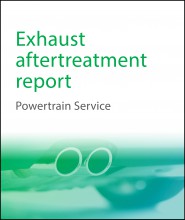
Exhaust aftertreatment report
The emission control limits for gasoline- and diesel-based powertrains are observed to considerably converge in terms of design and emissions control requirements.
The emission control limits for gasoline- and diesel-based powertrains are observed to considerably converge in terms of design and emissions control requirements.
Gasoline DI engines almost equate with diesel engines in particulate emissions and required aftertreatment. The integration of the GPF and TWC into a four-way catalyst is expected to become a new trend in gasoline powertrains.
1. Overview
a) Introduction
b) Report methodology
2. Regulation policies
a) Global scenario
b) Criterion emissions
c) Testing regimes
d) State of diesel powertrains
e) PGM trends
3. Technology overview
a) Exhaust manifold
b) Catalytic converters
c) Gasoline particulate filters
d) Diesel particulate filters
e) SCR technology
4. Supplier analysis
a) OEM–supplier relationship matrices
b) Tenneco
c) Faurecia
d) Vitesco Technologies (Continental)
e) Eberspächer
f) Bosal
g) Boysen
5. Conclusion
From key trends affecting today’s business environment to forward-looking forecasts of future output, AutoTechInsight provides the information you need to develop strategy for each of its services.
Staying abreast of automotive sector/topic-specific developments, trends, and competitive activity can be time-consuming. With many sources available, it is often difficult to find critical and reliable market information that stakeholders of the automotive industry need. Conducting business analysis, product, or market strategy assessments without validated market data is risky.
AutoTechInsight provides the ability to access the wealth of recognized thought leadership, data, and analysis from IHS Automotive on a broad spectrum of industry topics and sectors. AutoTechInsight offers a lens into more than a dozen vehicle component categories. Each service provides the insight you need to anticipate future demand, access competitive intelligence, and stay abreast of changing dynamics.
Services coverage include:
|
|





